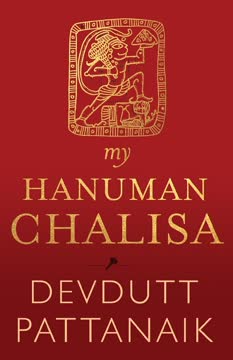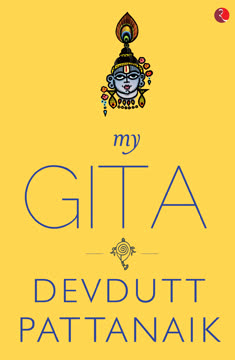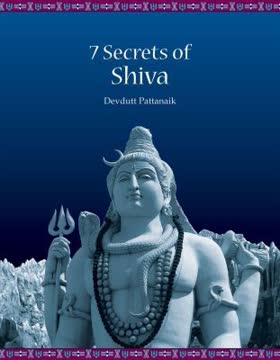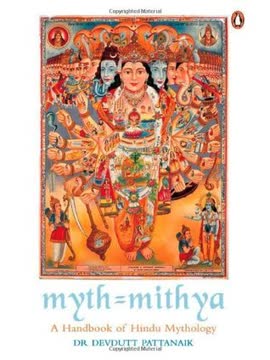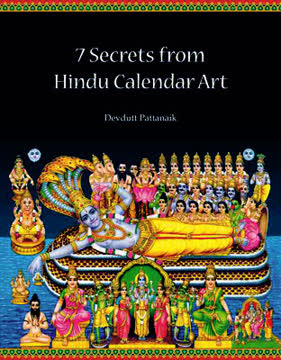Key Takeaways
1. The Hanuman Chalisa: A Mind-Temple for the Masses
In the midst of the crushing inhumanity that is urban life, you see a glow on the reader’s face.
Personal Hinduism. The Hanuman Chalisa is a readily accessible expression of personal Hinduism, offering solace and connection to the divine amidst the chaos of modern life. Its popularity stems from its voluntary nature, free from rigid commandments or priestly prescriptions. It is a self-initiated journey into faith.
Creating a Temple in the Mind. The Chalisa's verses are structured to create a "mind-temple," enshrining a deity within the reader's consciousness. This psychological space parallels the physical world, offering a sanctuary for reflection and devotion. The verses guide the reader through ideas of birth, adventure, duty, glory, death, and rebirth.
From Particular to Universal. Each line of the Chalisa serves as a gateway to the vast body of Hindu thought, inviting readers to traverse from the specific to the universal and back to the personal. This journey mirrors Hanuman's own leaps, connecting the individual to the broader spiritual landscape.
2. Hanuman: From Monkey to Embodiment of Divine Qualities
Strength without intelligence makes us dim-witted tools in the hands of others.
Beyond Physical Form. Hanuman's monkey form is symbolic, representing the animalistic core within humanity. His journey towards Ram signifies the transcendence of these instincts, embracing empathy and dharma. He is not just a monkey, but a being who embodies strength, intelligence, knowledge, and virtue.
Qualities Worthy of Worship. Hanuman is a protector, a hero who vanquishes both physical and psychological demons. He drives away negative thoughts and ushers in positive ones, standing on the frontier between the wilderness and settlement, the animal and the human.
The Importance of Balance. Hanuman's qualities highlight the need for balance. Strength without intelligence is dangerous, while intelligence without strength is ineffective. Knowledge without virtue can be destructive, while virtue without knowledge is naive. Hanuman embodies the harmonious integration of these qualities.
3. The Power of Stories: Relishing the Divine Narrative
In Hinduism, mind and matter are seen as interdependent, and their complementary nature was expressed using many words such as dehi-deha, atma-sharira, purusha-prakriti, shiva-shakti.
Stories as Vessels of Wisdom. Listening to stories of the divine is a means of expanding the mind and discovering the divine within. These narratives, whether memoirs, chronicles, or epics, are containers of Vedic wisdom.
Hanuman as a Listener and Narrator. Hanuman nourishes himself by listening to stories of Ram, relishing the aesthetic juices of the tale. He is also a narrator, sharing the story of Ram with Sita, Bharat, and others, demonstrating the importance of storytelling in transmitting knowledge and fostering connection.
The Value of Relationship. Hanuman's presence in Ram's story highlights the importance of relationship. He places Ram, Lakshman, and Sita in his heart, recognizing that the self is incomplete without the other. This emphasis on relationship is a key aspect of Hindu thought.
4. Adaptability and Strength: Hanuman's Ever-Changing Form
This ability to adapt for the benefit of the other is a hallmark of divinity, one that Hanuman also possesses.
Shape-Shifting for the Greater Good. Hanuman's ability to contract and expand his physical form demonstrates his adaptability. He appears small and vulnerable to Sita, and giant and fearsome to Ravana, showcasing his understanding of what shape others respond to.
The Sundar-kand and Hope. The Sundar-kand chapter of the Ramayana, where Hanuman's transformations are most prominent, evokes hope. It signifies the possibility of reunion and the tenderness of love, highlighting Hanuman's role as a catalyst for positive change.
Beyond Brute Force. Hanuman's encounters with female demons, such as Simhika and Surasa, reveal his ability to use both brute force and cunning. He adapts his approach to overcome obstacles, demonstrating his multifaceted nature.
5. Devotion and Service: The Essence of Hanuman's Relationship with Ram
By comparing Hanuman to Bharat Ram elevates the status of Hanuman from servant to family.
Unconditional Service. Hanuman's devotion to Ram is characterized by selfless service and a lack of expectation. He asks for nothing in return except the pleasure of serving his master, elevating his status from servant to family.
The Comparison to Bharat. Ram's comparison of Hanuman to his brother Bharat is significant. It signifies Hanuman's inclusion in the royal family, highlighting his importance and the depth of their bond.
Beyond Obligation. Hanuman's service to Ram is not born of obligation but of volition and love. This distinguishes him from others who serve out of duty or expectation, emphasizing the purity of his devotion.
6. Seeking Refuge: Hanuman as Protector and Problem-Solver
With you as guardian there is nothing to fear.
A Primal Need. Seeking shelter and protection from Hanuman evokes humanity's most primal needs. He is a guardian, a protector who offers solace and security in a world filled with danger.
Beyond Doctrine and Rules. Submission to Hanuman does not entail following a rigid doctrine or set of rules. It is about submitting to the will of the divine, accepting both the good and the bad with grace and equanimity.
A Spiritual Hug. Hanuman's protection is a spiritual hug from God, comforting the frightened and lost devotee. He makes the devotee feel valued and cared for, granting meaning and purpose to their existence.
7. The Interconnectedness of All: Hanuman's Role Across the Hindu Pantheon
The three worlds tremble when you roar.
Beyond Three Worlds. Hanuman's glory extends across the three worlds, encompassing earth, the celestial regions, and the nether regions. His presence spans Tantrik and Vedantic landscapes, appealing to diverse schools of thought.
From Devata to Bhagavan. Hanuman's journey to Patala transforms him from a deity dependent on Ram to an independent god in his own right. He takes initiative and makes decisions on his own, becoming dependable for Ram.
A Synthesis of Qualities. Hanuman embodies a synthesis of qualities, encompassing strength, wisdom, and compassion. He is a warrior, a servant, and a sage, representing the harmonious integration of diverse aspects of the divine.
8. Karma, Rebirth, and Liberation: The Ultimate Fruits of Devotion
Singing your praises leads to Ram.
Beyond Material Gains. The benefit of adoring Hanuman extends beyond material gains. It encompasses the forgetting of sorrows accumulated over lifetimes and the attainment of liberation.
Multiple Lives. The concept of multiple lives distinguishes Indic faiths from Abrahamic faiths. Hanuman's devotion helps navigate the karmic cycle, offering solace and guidance through the challenges of each life.
The Promise of Immortality. Devotion to Hanuman grants not only rebirth but also immortality and peace in the afterlife. It offers the promise of a world without suffering, where one can gaze upon the face of Ram for eternity.
9. Hanuman's Enduring Legacy: Across Cultures and Ages
Your fame radiates through the world.
Across Four Eras. Hanuman's glory spans across the four yugas, making him a Chiranjivi, an immortal being. His presence is felt across time, offering guidance and protection to devotees in every age.
Beyond Indian Shores. The story of Hanuman has traveled beyond Indian shores, influencing cultures and traditions in Southeast Asia and China. His image and qualities have been adapted and integrated into local narratives, demonstrating his universal appeal.
A Timeless Symbol. Hanuman remains a timeless symbol of devotion, strength, and compassion. His story continues to inspire and uplift, offering hope and guidance to those who seek refuge in his grace.
Last updated:
FAQ
1. What is "my Hanuman Chalisa" by Devdutt Pattanaik about?
- Personal Exploration of Hanuman Chalisa: The book is Devdutt Pattanaik’s personal exploration and interpretation of the Hanuman Chalisa, a popular Hindu devotional hymn dedicated to Hanuman.
- Verse-by-Verse Analysis: It provides a detailed, verse-by-verse explanation of the Hanuman Chalisa, delving into its symbolism, mythology, and relevance in contemporary life.
- Contextual and Cultural Insights: The book situates the Chalisa within the broader context of Hindu philosophy, temple culture, and Indian society, making it accessible to modern readers.
- Illustrations and Storytelling: Pattanaik includes his own illustrations and storytelling to enrich the reader’s understanding and engagement with the text.
2. Why should I read "my Hanuman Chalisa" by Devdutt Pattanaik?
- Accessible Interpretation: The book demystifies the Hanuman Chalisa, making its spiritual and philosophical concepts approachable for readers of all backgrounds.
- Cultural and Historical Context: It offers insights into the origins, evolution, and significance of Hanuman and the Chalisa in Indian culture and beyond.
- Practical Wisdom: Pattanaik connects ancient wisdom to modern life, showing how the lessons of Hanuman can help address contemporary challenges.
- Unique Perspective: The author’s personal, non-academic approach invites readers to expand their own understanding rather than seeking a single “truth.”
3. What are the key takeaways from "my Hanuman Chalisa"?
- Hanuman as a Symbol: Hanuman represents strength, humility, devotion, and the ability to overcome obstacles, both external and internal.
- Mind-Temple Concept: The Chalisa is seen as a way to build a “temple in the mind,” emphasizing the importance of psychological and spiritual well-being.
- Integration of Hindu Thought: The book explores how the Chalisa encapsulates core Hindu ideas like dharma, karma, desire, and liberation.
- Diversity of Interpretation: Pattanaik highlights the multiplicity of meanings and the value of personal engagement with myth and scripture.
4. How does Devdutt Pattanaik approach the Hanuman Chalisa differently in "my Hanuman Chalisa"?
- Personal, Not Academic: Pattanaik avoids a purely scholarly approach, focusing instead on expanding personal and reader truth through storytelling and reflection.
- Symbolic and Psychological Reading: He interprets the verses metaphorically, relating them to psychological states and life experiences rather than just literal or historical events.
- Inclusivity and Plurality: The book acknowledges and respects diverse interpretations, encouraging readers to find their own meaning in the text.
- Contemporary Relevance: Pattanaik draws parallels between ancient wisdom and modern issues, making the Chalisa relevant for today’s readers.
5. What is the structure of the Hanuman Chalisa, and how is it explained in "my Hanuman Chalisa"?
- Forty-Three Verses: The Hanuman Chalisa consists of 40 chaupais (quatrains) framed by 3 dohas (couplets), serving as entry and exit points to the “mind-temple.”
- Sequential Exploration: Pattanaik explains each verse in order, providing context, stories, and philosophical insights for every section.
- Themes and Progression: The structure moves from establishing intent and invoking blessings, through Hanuman’s qualities and deeds, to the benefits of devotion and the poet’s own prayer.
- Symbolic Journey: The arrangement is seen as a journey from the external to the internal, from material concerns to spiritual realization.
6. What are the main qualities and roles of Hanuman as described in "my Hanuman Chalisa"?
- Strength and Humility: Hanuman is depicted as immensely powerful yet humble, using his abilities in service of Ram and others.
- Devotion and Service: He is the ideal devotee, serving selflessly without seeking personal gain, and is elevated from servant to family by Ram.
- Protector and Problem-Solver: Hanuman is invoked as a guardian against dangers, diseases, and negative influences, both physical and psychological.
- Shape-Shifter and Adaptable: His ability to change form symbolizes adaptability and the capacity to respond to different situations with wisdom.
7. How does "my Hanuman Chalisa" explain the psychological and spiritual significance of the Chalisa?
- Mind as a Mirror: The book uses the metaphor of the mind as a mirror that needs cleansing (through the guru’s blessings) to reflect reality clearly.
- Desire and Destiny: It discusses the interplay of desire (kama) and destiny (karma), and how Hanuman helps balance and transcend them.
- Alignment of Mind, Speech, and Action: The Chalisa is presented as a tool for aligning thoughts, words, and deeds, leading to inner harmony.
- Path to Liberation: Through devotion and selfless service, the Chalisa guides the devotee toward liberation (moksha) and freedom from suffering.
8. What unique stories or interpretations does Devdutt Pattanaik include in "my Hanuman Chalisa"?
- Hanuman’s Childhood and Feats: The book recounts lesser-known tales, such as Hanuman mistaking the sun for a fruit and his interactions with other mythological figures.
- Comparisons with Other Cultures: Pattanaik draws parallels between Hanuman and figures like Sun Wukong (the Monkey King) in China and Hanuman in Southeast Asian traditions.
- Symbolic Readings: He interprets Hanuman’s actions (like carrying Ram’s ring in his mouth) as reflections of innocence and the transcendence of social norms.
- Role in Tantra and Vedanta: The book explores Hanuman’s place in both Tantric and Vedantic traditions, showing his multifaceted significance.
9. How does "my Hanuman Chalisa" address the relationship between Hanuman, Ram, and other deities?
- Hanuman as Ram’s Devotee: Hanuman’s devotion to Ram is central, and he is often seen as the bridge between the devotee and the divine.
- Connections to Shiva and the Goddess: The book discusses Hanuman’s identification as a form or avatar of Shiva and his empowerment by Sita (the Goddess).
- Interplay of Divine Roles: Hanuman is shown as embodying qualities of Brahmin, Kshatriya, and Shudra, transcending social hierarchies.
- Mediator and Doorkeeper: He is portrayed as the guardian of Ram’s door, symbolizing access to the divine and the importance of humility.
10. What practical advice or methods does "my Hanuman Chalisa" offer for readers seeking personal growth or spiritual benefit?
- Chanting and Concentration: Regular recitation of the Hanuman Chalisa is recommended for mental clarity, strength, and overcoming obstacles.
- Alignment and Focus: The book emphasizes aligning mind, action, and speech (man, kram, vachan) for effective spiritual practice.
- Seeking Shelter and Surrender: Surrendering to Hanuman’s protection is presented as a way to find courage and peace in the face of life’s challenges.
- Service and Selflessness: Emulating Hanuman’s selfless service is encouraged as a path to personal fulfillment and spiritual liberation.
11. What are some of the best quotes from "my Hanuman Chalisa" and what do they mean?
- “Within infinite myths lies an eternal truth. Who sees it all? Varuna has but a thousand eyes. Indra, a hundred. You and I, only two.” – This quote highlights the limitations of human perception and the value of humility in seeking truth.
- “Victory to Hanuman who is the ocean of wisdom and virtue.” – Emphasizes Hanuman’s embodiment of both knowledge and moral excellence.
- “Problems Hanuman takes away. When the heart, action and word are fixed on him.” – Stresses the importance of wholehearted devotion and alignment in overcoming difficulties.
- “Hanuman amazes you with his many incredible qualities—his ability to leap over an ocean, rip his chest open, resist Ram’s arrows by chanting Ram’s name. Simultaneously, he amazes you with simian innocence.” – Reflects the paradoxical nature of Hanuman: powerful yet innocent, divine yet childlike.
12. How does "my Hanuman Chalisa" connect the Hanuman Chalisa to broader Hindu philosophy and contemporary life?
- Integration of Myth and Meaning: The book shows how the Chalisa encapsulates key Hindu concepts like dharma, karma, moksha, and the interplay of mind and matter.
- Relevance to Modern Challenges: Pattanaik relates Hanuman’s qualities—adaptability, resilience, empathy—to the stresses and complexities of urban, modern life.
- Plurality and Personal Truth: The text encourages readers to find their own meaning in the Chalisa, reflecting Hinduism’s acceptance of diverse paths and interpretations.
- Spiritual Practice for All: By making the Chalisa accessible and relevant, the book invites people from all walks of life to engage with its wisdom for personal and collective well-being.
Review Summary
my Hanuman Chalisa by Devdutt Pattanaik decodes the popular Hindu hymn, offering insights into each verse's meaning and cultural significance. Readers appreciate the author's explanations of Hindu mythology and philosophy, making the text accessible to modern audiences. Many found the book enlightening, praising its ability to connect ancient wisdom with contemporary life. Some critics felt the interpretations were subjective or lacked depth. Overall, the book is well-received by those seeking to understand the Hanuman Chalisa's spiritual and cultural importance.
Similar Books
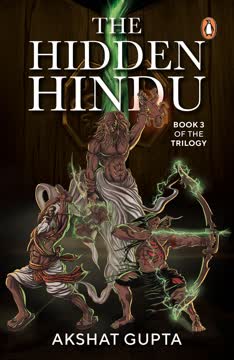
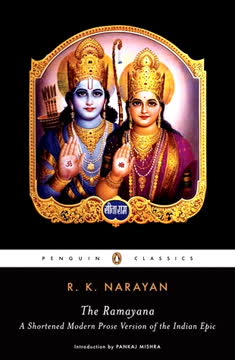

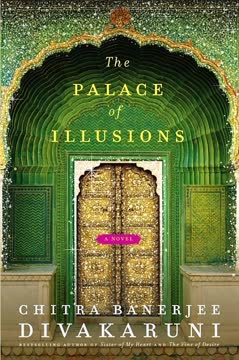
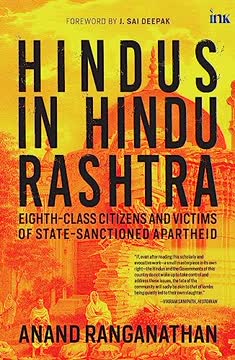
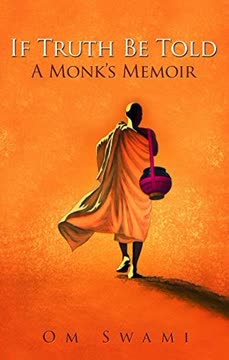
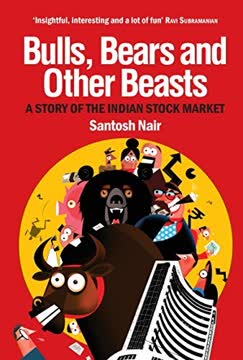

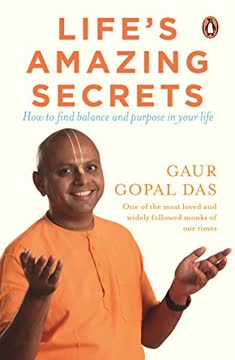
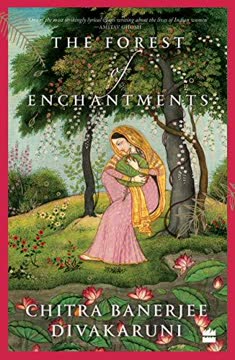
Download PDF
Download EPUB
.epub digital book format is ideal for reading ebooks on phones, tablets, and e-readers.
